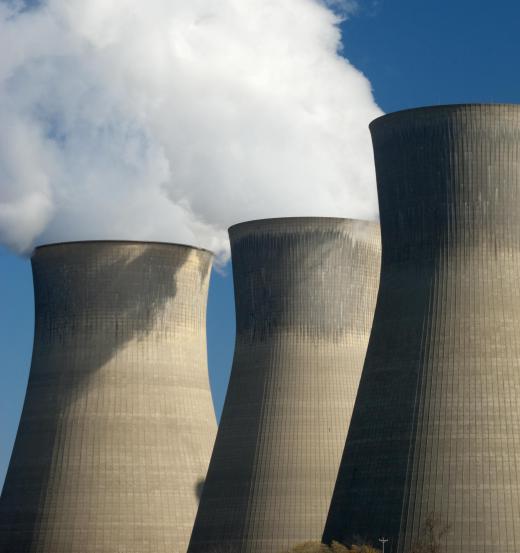What is the Strong Nuclear Force?
 Michael Anissimov
Michael Anissimov
The strong nuclear force, also known as the strong interaction, is the strongest force in the universe, 1038 times stronger than gravity and 100 times stronger than the electromagnetic force. The only catch is that it only operates on length-scales of the atomic nucleus, rapidly dropping off for longer distances.
The strong nuclear force is what is liberated during nuclear reactions, of the sort that take place in the Sun, nuclear power plants, and nuclear bombs. The strong force is described by the laws of quantum chromodynamics, part of the Standard Model of particle physics, which was developed in the 1970s. The 2004 Nobel Prize in Physics was awarded to David Politzer, Frank Wilczek and David Gross.

The strong force does not actually occur directly between protons and neutrons in the nucleus, but in the smaller quarks making them up. The force is mediated by fundamental particles called gluons, named for the way they glue quarks together. Each proton or neutron is composed of three quarks. The inter-nucleon force which holds the nucleus together is known as the nuclear force or the residual strong force, because it is only a second-order effect of the true strong force, holding together their constituent quarks.
The strong force has a property called asymptotic freedom, meaning as quarks get closer together, the force diminishes in strength, asymptotically approaching zero. Conversely, as the quarks get further apart, the force gets stronger. Failure to find free quarks has been taken to mean that no phenomena in the universe, except for perhaps black holes, is capable of ripping quarks apart from one another.
Theories of the strong force emerged from observations in the 1950s, where a variety of different fundamental particles called the "particle zoo" were observed in bubble chambers. This spectrum of particles demanded explanations for their properties based on an elegant theory of their underlying constituents. The theory of quantum electrodynamics (QED) delivered, providing the most precise quantitative scientific theory known. However, it is a well-known fact that QED is not complete, as it is not compatible with the current best theory of gravity, general relativity. Physicists continue to search for a mathematical unification of QED and general relativity.
It is hypothesized that there may exist quark stars, extremely high-density variants of neutron stars with such gravitational pressure that individual neutrons cannot be distinguished, and all quarks are merged together into something resembling one gigantic neutron, held together exclusively by the strong force and gravity. The existence of quark stars has yet to be definitively confirmed, however.
AS FEATURED ON:
AS FEATURED ON:











Discussion Comments
@ Georgesplane- Although Alpha particles are not very dangerous outside of the body, once inhaled or ingested, they become extremely dangerous. The reason alpha particle radiation is so dangerous when they are inhaled is due to their so strongly ionizing. The atoms that the alpha particles emitted from are in a state of recoil, causing these cations to have a positive charge. These cations then become attracted to the negative charge of DNA, causing genetic mutations.
This type of nuclear radiation is the biggest threat in terrorist attacks. To be effective in an attack, terrorists do not need fissionable nuclear material. Those in the immediate vicinity of the attack will likely suffer from radiation sickness. Those that survive will likely bear the effects for the rest of their lives. When the dust settles, the environment will hold these radioactive particles; creating a hazard every time someone stirs the earth. This can cause genetic damage to generations of people.
The article stated the "strong nuclear force is what is liberated during" nuclear fission. The strong nuclear force is also broken during alpha and proton emission.
Alpha emission is more common than proton emission, and occurs in atoms with heavy nucleuses. The electrical force created by all of the protons on one another is greater than the strong nuclear force. This is the law of repulsion, which states that electrical charges of the same force will push away from each other. An atom that has a large amount of protons will sometimes eject a pair of protons and neutrons from the outer edge. The proton Neutron mass ejected is called an alpha particle.
Alpha radiation does not penetrate like gamma radiation; often being able to be deflected by the skin or a piece of paper. A proton emission is the same thing except the only particle ejected is a proton.
Post your comments